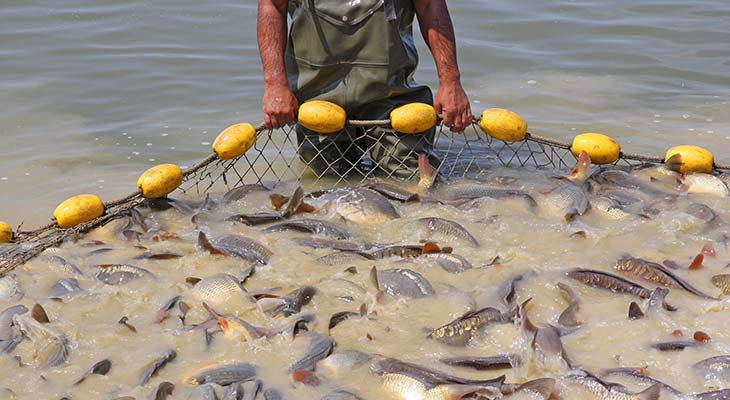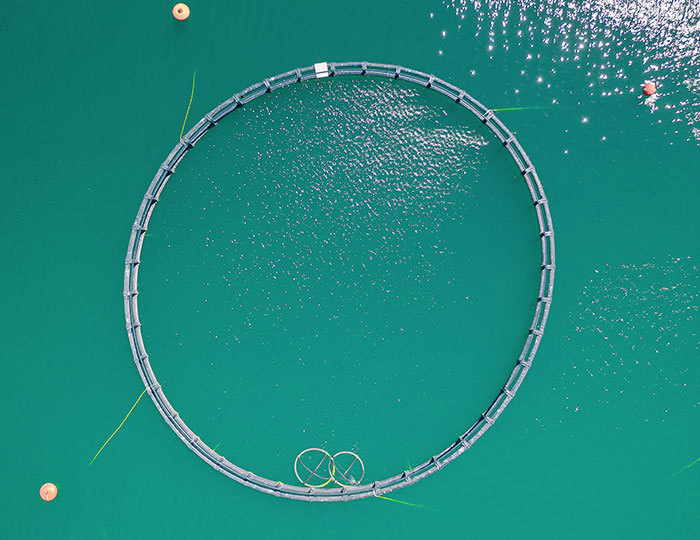NEWS • 2021-12-05
Closing performance gaps in aquaculture
Producing more healthy food for all and doing it more sustainably are two of the most pressing challenges the world faces. Aquatic foods can be an important piece of this puzzle, but so far too much focus has been on solutions benefitting the 16% living in high-income countries, researchers claim in a recent article. They want to turn the spotlight to the performance gap in other parts of the world, where targeted interventions and investments could significantly boost access to aquatic foods without increasing their environmental footprint. The study identifies nine intervention areas for improving the productivity and sustainability of global aquaculture.

Photo: IStock
Food production has a vast effect on the planet and farmed fish add to these impacts, but much less so than meat production on land, with an 87% smaller carbon footprints than beef and using 49% less land than poultry and 84% less fresh water than pigs.
In contrast to meat production on land, aquaculture is highly diverse, comprising numerous species and systems with varied environmental impacts and nutritional values. But conversations around increasing aquatic food production often focus on species, environments, and ambitious hi-tech solutions that will benefit the privileged few. And while luxury aquatic foods from offshore farming and recirculating aquaculture systems potentially can reduce environmental impacts by replacing red meat consumption, these are generally costly to acquire and operate with high electricity and fuel dependency.
Farming more using less
The atlantic salmon industry have improved sustainability through better feed and farming practises and, at least in Norway, nearly eliminated antimicrobial use, while increasing both growth rates and fillet yields. However, most aquatic foods still suffer from substantial performance gaps, meaning the gap between attainable and actual yields, according to the article in One Earth, led by Beijer researcher Patrik Henriksson (also affiliated to Stockholm Resilience Centre and Worldfish). Not least the omnivorous species and freshwater finfish (especially carps) that represent the majority of aquaculture production worldwide.
“This means we have the opportunity to increase productivity for a lot of species in existing conventional aquaculture systems, especially freshwater pond systems, and at the same time reduce environmental impact“, says Patrik Henriksson, adding: “Much of this gap could be closed by simple interventions that are readily available.”
Nine areas of intervention
The authors identify nine areas of interventions for improving both productivity and environmental performance: species choice, genetic improvements, farm technologies and practices, spatial planning and access, disease reduction, feed, regulations and trade, post-harvest processing and distribution, and financial tools.
For example, more tolerant and less resource-demanding species have a lower environmental impact, but are less in demand.
“This could to some extent be overcome by nudging consumer behavior and focusing on value-added products like surimi, which is made from deboned fish paste,” say the authors.
Equally, many smallholder farmers are unable to benefit from quality feed, seed, or disease diagnostics due to limited access to credit.
“Enabling insurance providers and cooperatives could play an important role in alleviating risk and gaining access to credit and markets among smallholder aquaculture farmers,” they add.
“Aquatic foods alone cannot ensure future food security but, if developed thoughtfully, they can play a greater role in alleviating the current food system’s environmental pressures on the planet”.
NEWS



